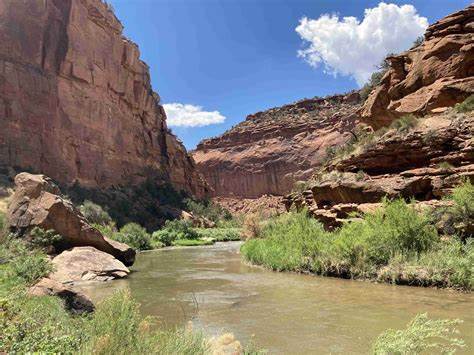In a famous 1969 sketch from Monte Python’s Flying Circus, Eric Idle approaches a stranger in a pub with a series of cryptic relationship questions, ending each with “wink wink, nudge nudge, say no more.” The skit was so popular it was repeated in the 1971 film, “And Now For Something Completely Different,” the 1982 film, “Monte Python Live at the Hollywood Bowl,” and the album, “Monte Python Live at City Center.”
Since then, “nudge nudge” has become a common expression, originally implying something off-color, but more recently just hinting that the speaker isn’t really saying what he means. An online database of idioms says it is “often added after the initial phrase as a way of emphasizing that no further explanation or discussion is needed.”
I hear it in political discussions frequently, a hint that, “I don’t need to spell this out; most of you know what I really meant.” I couldn’t help thinking of the expression when I read the joint statement of Colorado Senators Michael Bennet and John Hickenlooper regarding the proposed national monument status for 391,000 acres of Dolores Canyons. It is among the hottest controversies on the Western Slope, and numerous leaders were asking the Senators for some signal of their intentions.
Their statement might as well have ended with the old idiom, because the press release essentially says, paraphrasing, “we support permanent protection for the area, but only if it means no changes of any kind.” They might have concluded with, “wink wink, nudge nudge, say no more.”
It defies logic that the Senators’ truly intend that nothing at all should change. After all, that would not satisfy the environmental industry groups demanding national monument status. Yet that is precisely what their statement says. It begins with the assertion that “Coloradans… want it permanently protected,” though it is not clear what the area needs protected from. In any case, the rest of the full-page statement is about changing nothing.
On management, they assert that the agencies in charge (Forest Service and BLM) should “continue to manage the federal lands in the northern Dolores landscape as they do now.” They say no access fees should be charged, which is also the status quo. They insist that existing uses and rules should continue unchanged, including grazing, mining, motorized travel, mountain biking, hunting and fishing. They even say, “Any designation should protect existing water rights and should not create a federal reserved water right” – language also used by Colorado Senators Bill Armstrong, Hank Brown, and Wayne Allard throughout the 1980s-90s wilderness/roadless area debates. It would also make Dolores Canyons different from nearly all national monuments, which might explain why the Senators stopped short of endorsing a national monument designation.
Instead, they offered a legislative plan in April to create something simpler – a national conservation area and special management area, totaling 68,000 acres, about a fifth of the proposed area. To many local officials, it seemed a reasonable compromise, but predictably, the environmental activists immediately labeled it unacceptable.
So, the Senators released their joint statement last week, wisely saying there is a clear “need for further discussion,” and outlining the no-change-in-anything principles. But here is the obvious question: Does anyone really believe monument advocates will be satisfied with a new national monument that preserves all existing uses, protects all the uranium mining sites, maintains livestock grazing, motorized access, and claims no water rights? Or will they simply bypass the congressional delegation and local governments they failed to convince, and take their case directly to the White House?
Remember, national monuments are always created by presidential executive orders, so perhaps instead of listening to hollow assurances about this specific proposal, we ought to think about what normally happens.
The latest example is the new management plan for Utah’s Bears Ears National Monument. That Monument totals 1.4 million acres, nearly four times the proposed Dolores Canyons monument. The Bears Ears plan designates two new “areas of critical environmental concern” covering 97,000 acres, and another 419,128 acres will be managed as lands with wilderness characteristics, a ninefold increase over the 49,000 acres already managed as wilderness. Off-highway vehicles will be banned from 569,971 acres, and livestock grazing ended on 169,529 acres. That totals 1,255,628 acres – almost the entire monument walled off from traditional uses.
When President Obama first created Bears Ears in 2016, following numerous public meetings with various “stakeholders,” community leaders in Utah were also assured that existing uses would be maintained – wink wink, nudge nudge, say no more.





Comments on this entry are closed.